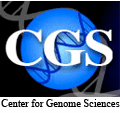Software
All software is Copyright Washington University and distributed under the BSD 2-Clause open source license.NetProphet 2.0
NetProphet 2.0, building on NetProphet 1.0, is a "data light" algorithm for mapping transcription factor networks from gene expression data and annotated genome sequence. It has been shown to have high accuracy on both yeast and fruit fly.
Relevant Publications:
Kang, Y.M., Liow, H.H., Maier, E.J., and Brent, M.R. In Review. "NetProphet 2.0: Mapping Transcription Factor Networks by Exploiting Scalable Data Re-sources."
RELEASESNetSurgeon
NetSurgeon is a novel algorithm for transcriptome engineering -- designing transcription-factor deletions or over-expressions to move cells to a gene expression state that is associated with a desired phenotype.
Relevant Publications:
RELEASESNetProphet
NetProphet is a novel algorithm for inferring transcriptional regulatory networks from gene expression data. For every possible interaction between a TF and a target gene, NetProphet computes a confidence score by combining the score from its coexpression analysis with the score from its DE analysis.
Relevant Publications:
Haynes B.H., Maier E.J., Kramer M.H., Wang P.I., Brown H., Brent M.R.. 2013. "Mapping functional transcription factor networks from gene expression data." Genome Research
RELEASESPhenoProphet
PhenoProphet is a novel algorithm that assigns each TF in a network a score representing the confidence that the deletion of that TF will yield a phenotypic change of interest. Given a network, the PhenoProphet score of a TF for a phenotype or interest is based on the enrichment of the TF's targets for genes that are known to be linked to the phenotype of interest.
Relevant Publications:
Maier E.J., Haynes B.H., Gish S.R., Wang Z.A., Skowyra M.L., Marulli A.L., Doering T.L., Brent M.R.. "Model-driven mapping of transcriptional networks reveals the circuitry and dynamics of virulence regulation." In Review
RELEASESN-Sieve
A network inference tool that uses an attenuation based structural prior. N-Sieve infers transcriptional networks from gene expression data comprised of both steady state and time course measurements.
N-Sieve
A network inference tool that uses an attenuation based structural prior. N-Sieve infers transcriptional networks from gene expression data comprised of both steady state and time course measurements.
Relevant Publications:
RELEASESGRENDEL
GRENDEL (Gene Regulatory Network Decoding Evaluations tooL), generates random gene regulatory networks according to user defined constraints on the network topology and kinetics. It then simulates the state of each regulatory network under various user defined conditions (the experimental design) and produces simulated gene expression data.
Relevant Publications:
Haynes B.H., Brent M.R.. 2009. "Benchmarking regulatory network reconstruction with GRENDEL." Bioinformatics 25(6):801.
RELEASESiParameterEstimation
iParameterEstimation is a highly configurable maximum likelihood parameter estimation package for generalized Hidden Markov Models. Specific configuration files are included for training Twinscan, N-SCAN and their EST variants.
Note: This software requires the eval package, available here.Relevant Publications:
RELEASESTrace Recalling
Relevant Publications:
Tenney A.E., Wu J.Q., Langton L., Klueh P., Quatrano R., Brent M.R.. 2007. "A tale of two templates: automatically resolving double traces has many applications, including efficient PCR-based elucidation of alternative splices." Genome Research 17(2):212-218.
RELEASESPairagon
Pairagon is a pair-HMM based cDNA-to-genome alignment program.
Relevant Publications:
Lu D.V., Brown R.H., Arumugam M., Brent M.R.. 2009. "Pairagon: A Highly Accurate, HMM-based cDNA-to-genome Aligner." Bioinformatics 25 (13): 1587-1593.
RELEASESprimerD
The primerD program implements a novel algorithm for the design of unique degenerate primer pairs. Using primers designed by primerD it is possible to reduce the total number of primers that need to be amplified by over 35% while amplifying the same number of targets. This program has a highly configurable set of parameters that account for both basic PCR and degenerate primer constraints. As a final verification of primer pair efficacy an extensive mis-priming check is done to ensure the uniqueness of each intended amplification.
Relevant Publications:
RELEASESeval
Eval is a flexible tool for analyzing the performance of gene-structure prediction programs. It provides summaries and graphical distributions judi togel for many statistics describing any set of annotations, regardless of their source. It also compares sets of predictions to standard annotations and to one another.
Relevant Publications:
Keibler, E. and M.R. Brent. 2003. "Eval: A software package for analysis of genome annotations." BMC Bioinformatics 4:50.
RELEASESPPFINDER
PPFINDER is a Perl-based procedure for finding processed pseudogenes in genome annotations (GTF format). PPFINDER identifies pseudogenes using two different methods, and creates a GTF file with pseudogene coordinates that can be used for masking the genome sequence. In gene prediction mode, PPFINDER will mask out the genomic sequence and rerun gene prediction. Rounds of pseudogene masking and gene prediction are iterated until convergence.
Relevant Publications:
van Baren, M. J., & Brent, M. R. (2006). Iterative gene prediction and pseudogene removal improves genome annotation. Genome research, 16(5), 678-685. doi:10.1101/gr.4766206
RELEASESValidate GTF
GTF (gene transfer format) is a simple, precise format for annotating protein coding genes which has been used for a number of multi-group annotation efforts. It is a specialized subset of GFF (general feature format). The specification for GTF can be found here.
If a GTF file contains errors, programs that parse it can yield false conclusions. Validate GTF is a flexible Perl script that checks a GTF file for correctness. It can detect most common syntactic errors, such as including the stop codon within the CDS annotation. It can also detect semantic errors, such as annotated coding sequence that contains stop codons spanning splice sites.
Relevant Publications:
Keibler, E. and M.R. Brent. 2003. "Eval: A software package for analysis of genome annotations." BMC Bioinformatics 4:50.
RELEASESTwinscan/N-SCAN
Twinscan/N-SCAN is our lab's suite of software for gene-structure prediction. We recommend running N-SCAN on our web server (http://mblab.wustl.edu/nscan). Twinscan is currently available for Mammals, Caenorhabditis (worm), Dicot plants, and Cryptococci. N-SCAN is available for human and Drosophila (fruitfly).
Relevant Publications:
Brent, M. R. (2008). Steady progress and recent breakthroughs in the accuracy of automated genome annotation. Nature Reviews Genetics, 9(1), 62-73. doi:10.1038/nrg2220
Brent, M.R. (2007). How does eukaryotic gene prediction work? Nature Biotechnology. 25(8): 883-885.
Gross, S. S., & Brent, M. R. (2006). Using multiple alignments to improve gene prediction. Journal of computational biology, 13(2), 379-393. doi:10.1089/cmb.2006.13.379
RELEASES


